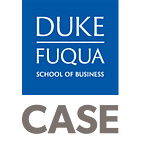Full Report PDF & Overview: Money Matters
Click here to find the full report PDF for Scaling Pathways: Financing for Scaled Impact.
As social enterprises drive toward scaled impact, the journey can be accelerated — or significantly slowed — by the strategies and tactics used to manage resource needs.
Accessing the right financing at the right points in the journey is critical to scaling success. As an analogy, consider the needs of a car with various options at the driver’s disposal to help navigate the road ahead.
In this analogy, if you are a social entrepreneur, the car is your enterprise and you are the driver. With your car, you travel over a bumpy road, moving closer and closer to your end game or your target equilibrium change. Your car can travel on many pathways, and, as outlined in Pivoting to Impact, you will face inevitable roadblocks and will need to make strategic pivots along the way. To be successful in financing this journey, you must set your course (understanding the rules of the road), determine which types of fuel you will use and when, and explore how you will use your car’s internal gears to help you navigate and accelerate.
SET THE COURSE: RULES OF THE ROAD
The organizations we interviewed use three interrelated “rules of the road” to ensure that their financing evolves in support of their scaling goals:
- Ensuring that cash follows use: Be strategic about pursuing sources and types of capital that fit within the enterprise’s strategic direction.
- Being cautious about the mission-financial sustainability balance: Identify natural limits toward achieving operational self-sufficiency.
- Maximizing financial “pivot-power:” Ensure the enterprise’s mix of capital will allow for the shifting of resources required to make strategic pivots.
“As a part of the job description, all nonprofit executives manage the tension between the pursuit of mission and the preservation of organizational and financial viability. This tension exerts pressure on day-to-day operations, and while it sometimes seems that one role dominates the other, in a healthy organization they always must be balanced.” — Clara Miller, Hidden in Plain Sight
FUEL UP: BRING IN EXTERNAL RESOURCES
External fuel helps you make continued progress. Fuel can blend various types of capital (e.g., grants, debt, contracts, and sponsorships) and sources (e.g., foundations, individual donors, and corporates). Our sample shared lessons and advice on three external fuel strategies that were important to their success:
- Finding flexible capital: The enterprises evaluated new sources of unrestricted funding, thought creatively about flexible uses of capital and crafted stories to attract funders to those uses, and leveraged business plans or milestone-based strategies to crowd in additional flexible capital. (To learn more about these tactics, read here.)
- Diversifying sources and types of funding, including impact investing: The enterprises took the time to understand funder motivations, diligently avoided mission creep, leveraged key moments (such as positive impact evaluation results) to layer on new funders, and thought innovatively about using impact investing and spin-off structures to engage new funders. (To learn more about these tactics, read here.)
- Leveraging results-based financing (RBF): Enterprises that have used RBF — including Development Impact Bonds — shared tips on clarifying the purpose for pursuing RBF, carefully selecting their best role within the structure, and using RBF to improve culture and systems in addition to financial sustainability. (To learn more about these tactics, read here.)
PUT IT IN GEAR: USE INTERNAL OPERATIONAL LEVERS
Your enterprise’s operations can serve as an engine to power your journey, optimizing the resources you already possess. The enterprises highlighted three broad internal operations levers that helped finance scale of impact:
- Reducing costs: Many of the enterprises focused on reducing costs to make scaling more efficient — thereby reducing the need for additional capital — and on using the “buy vs. build” frame to be strategic about what they do directly versus outsourcing or partnering. (To learn more about these tactics, read here.)
- Earning income: The enterprises highlighted pros and cons of earned income strategies and offered tips on a realistic approach to revenue goals, including shifting from cost per unit (or percentage of earned revenue) to more custom value per dollar measures, and resisting mission creep. (To learn more about these tactics, read here.)
- Leveraging hybrid legal forms: The enterprises reported on the experience of setting up subsidiary for-profits as a means to scale impact and generate revenue from new capital sources at the same time. (To learn more about these tactics, read here.)
Read next: Set the Course: Rules of the road for financing scale, or return to see all articles in Money Matters.
This article was written by Catherine Clark, Erin Worsham, Kimberly Langsam, and Ellen Martin and released in March 2018. Click here to find the full PDF of “Financing for Scaled Impact.”
